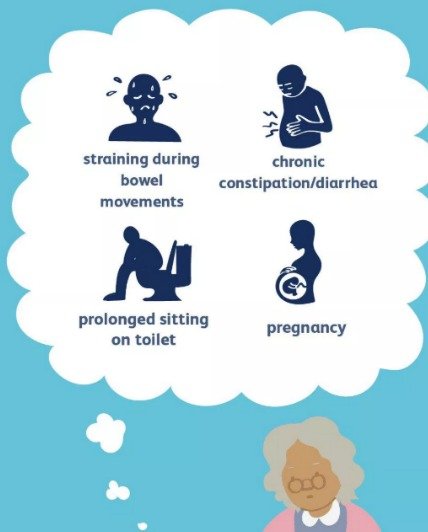Hemorrhoids Care Made Simple: A Friendly Guide from Your Gastroenterologist

Hemorrhoids, also known as piles, are swollen blood vessels in and around the anus and lower rectum. They can be uncomfortable and even painful—but they’re also very common and treatable.
Many people feel shy talking about hemorrhoids, but there’s no need to suffer in silence. Let’s break down what they are, why they happen, and how you can take care of them with the right food, lifestyle habits, and treatment.
What Are Hemorrhoids?
Hemorrhoids can be internal or external:
- Internal hemorrhoids are located inside the rectum. They usually aren’t painful, but they can cause painless rectal bleeding during bowel movements.
- External hemorrhoids develop under the skin around the anus. These can be itchy, painful, and may cause swelling or lumps. In some cases, a clot (thrombosis) can form, leading to intense pain and swelling.

What Causes Hemorrhoids?
Hemorrhoids can happen when there’s extra pressure on the veins in your rectum. This can be due to:
- Straining during bowel movements.
- Chronic constipation or diarrhea.
- Sitting for long periods (especially in the bathroom).
- Pregnancy (due to increased pressure in the pelvic area).
- Being overweight or having a low-fiber diet

Symptoms to Look Out For
Not all hemorrhoids hurt, but they can cause:
- Pain or burning during or after using the toilet.
- Itching or irritation around the anus.
- Bright red bleeding on toilet paper or in the toilet.
- A lump or swelling near the anus.
- Feeling like you didn’t finish after a bowel movement

How to Take Care of Hemorrhoids
Treatment depends on how severe your symptoms are. In many cases, simple changes to your diet and routine can bring a lot of relief.
1. Eat the Right Foods
A fiber-rich diet is key to preventing and managing hemorrhoids. Fiber softens your stool and helps you go to the bathroom more easily—without straining.
Add more of these to your daily meals:
- Fruits: papaya, apples, bananas, pears, berries.
- Vegetables: spinach, broccoli, carrots, beets.
- Whole grains: oats, brown rice, whole wheat bread.
- Legumes: lentils, chickpeas, beans.
- Nuts and seeds

Drink lots of water (8–10 glasses a day) to keep things moving smoothly.
Avoid:
- Spicy food (can worsen burning or irritation).
- Caffeine and alcohol (can dehydrate you).
- Fried, processed, or low-fiber junk food
2. Lifestyle Habits That Help
Small changes in your daily habits can go a long way in managing hemorrhoids.
- Go when you feel the urge – Don’t hold it in.
- Avoid straining or sitting too long on the toilet.
- Exercise regularly – Walking or yoga helps digestion and prevents constipation.
- Use a sits bath – Soak your bottom in warm water for 15–20 minutes a few times a day. This eases pain and reduces swelling.
- Keep the area clean – Use soft, unscented wipes or water. Avoid harsh soaps or dry toilet paper.

3. Medications and Home Treatments
Many mild to moderate cases can be managed at home with over-the-counter remedies:
- Creams and ointments with hydrocortisone, lidocaine, or witch hazel (reduce pain, itching, and swelling).
- Stool softeners (to avoid pushing during bowel movements).
- Suppositories (for internal hemorrhoids).
- Pain relievers like paracetamol or ibuprofen

4. When to See Your Gastroenterologist
Sometimes, hemorrhoids don’t go away with home care alone. You should book an appointment if:
- Bleeding continues or gets worse.
- Pain becomes severe.
- You notice a large lump or swelling.
- Symptoms last longer than a week despite treatment

Your doctor may recommend non-surgical treatments like:
- Rubber band ligation – Cuts off blood supply to the hemorrhoid.
- Sclerotherapy – Injects a solution to shrink it.
- Infrared coagulation – Uses heat to reduce it
Conclusion
Hemorrhoids can be uncomfortable, but they’re nothing to be ashamed of—and you don’t have to live with the pain. With healthy eating, better bathroom habits, and proper care, most people get relief quickly.
If symptoms don’t improve, your gastroenterologist is here to help with safe, effective treatments.
